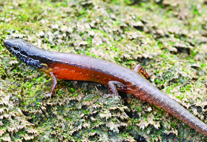Abstract
A new nematode species was recovered from the syconia of Ficus altissima from the residential area of Huajingxincheng, Guangzhou, Guangdong Province, China during a survey of nematode diversity. Schistonchus altissimus n. sp. is characterised by having females with a short post-uterine sac, an ovoid spermatheca and a conoid tail with a mucron in the female, excretory pore located near the lip; and males with amoeboid sperm, a conoid tail without a mucron and three pairs of subventral papillae, no gubernaculum, and hook-shaped spicules with a cucullus and a thorn-shaped rostrum. Schistonchus altissimus n. sp. is typologically differentiated from all other described species in this genus, except for S. microcarpus, by having a spicule with cucullus on the male tail tip. Schistonchus altissimus n. sp. is easily differentiated from other sequenced species by the partial small subunit rRNA gene (SSU), D3 expansion segment of the large subunit rRNA gene (LSU) and mitochondrial DNA subunit I (mtCOI). Phylogenetic analysis with partial SSU sequences suggests that S. altissimus n. sp. is in a highly supported monophyletic clade with two Chinese species (S. microcarpus and S. centerae) and two neotropical species (S. aureus and Schistonchus sp. ex Ficus colubrinae Standl.). Based on inferences using LSU D3 sequence data, S. altissimus n. sp. has a closer relationship with four Chinese species (S. centerae, S. fistulosus, S. guangzhouensis and S. microcarpus) than with S. hirtus and S. superbus, also from China.

